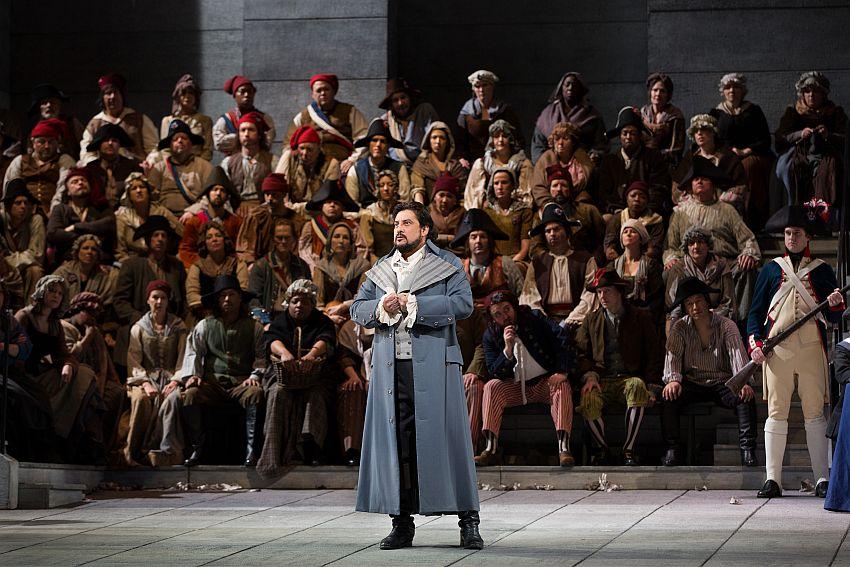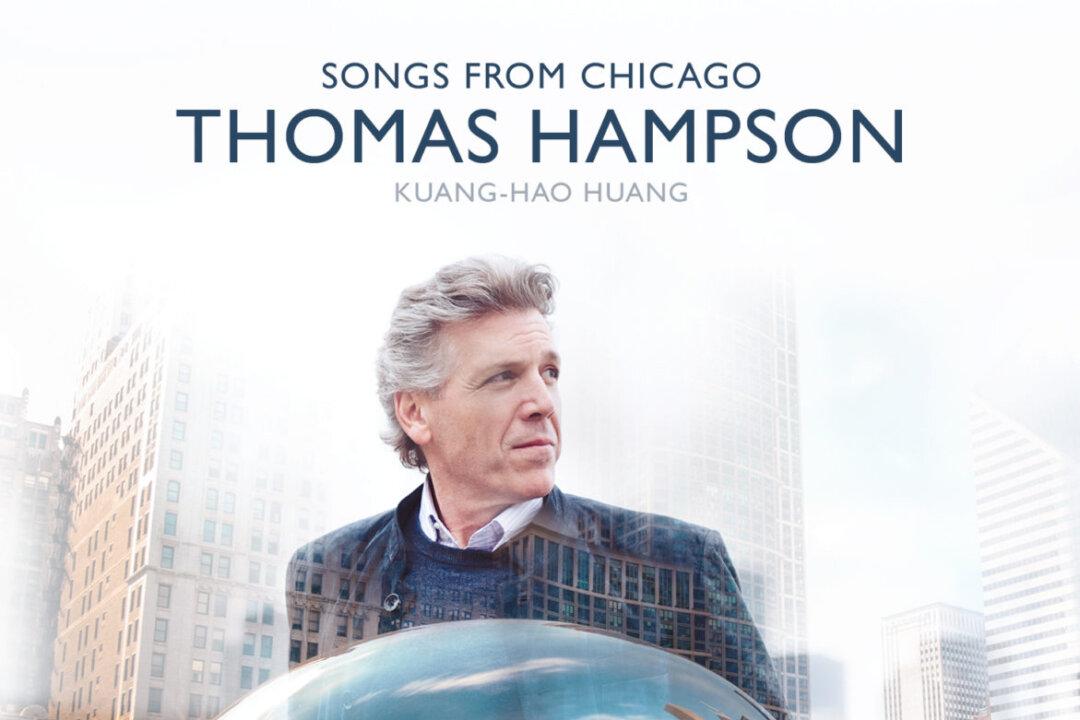NEW YORK—Umberto Giordano’s verismo opera “Andrea Chénier” still has the power to excite audiences when the right singers are cast. While the current revival at the Metropolitan Opera scores in many respects and is easily as good as the Met’s 2007 production, it has its ups and downs.
One of the chief assets of the opera is that it has four famous arias: Two for the tenor lead (“Un di all’azzurro spazio,” and “Come un bel dì di Maggio”), one for the soprano (“La Mamma Morta”), and one for the baritone (“Nemico della patria”).
While there are other arias and duets of interest, these four are frequently recorded and performed in concerts. (Perhaps the most intense scene in the movie “Philadelphia” occurs when Tom Hanks—who won an Academy Award for the role—is playing and describing Maria Callas’s recording of “La Mamma Morta” to Denzel Washington.)
The libretto was written by Luigi Illica, who also wrote the script for “Tosca.”
The opera is based on a real person, the French poet Andre Chénier, who was executed during the French Revolution. Though the two popular tenor arias were inspired by the poet’s works, most of the plot, including the romantic triangle at the heart of it, are fabricated.
The Plot
The opera begins with Gérard (the baritone role), the servant of the Countess de Coigny, expressing contempt for the aristocracy. Right afterward, he reveals his secret passion for Maddalena (the Countess’s daughter).
In contrast to Gérard’s railings about injustice, the flighty young woman, preparing for a ball at her chateau, complains about having to wear uncomfortable gowns.
At the ball, Maddalena meets Andrea Chénier and asks him to improvise a poem. He starts out by describing the beauty of nature and then launches into an attack on the class system that is similar to the thoughts expressed earlier by Gérard. Naturally, the other guests are offended but the Countess calms them down and calls for a dance to be played. Then Gérard appears with a group of hungry peasants and publicly resigns his position. That ends the ball.
By the start of the second act, the Reign of Terror has begun. Chénier’s friend urges him to leave the country, but the poet says that he has received a letter from an anonymous woman asking him for help.
When Chénier meets her, she turns out to be Maddalena. They declare their love, but Gérard (who has been tipped off about the meeting by a spy) bursts in and is wounded by Chénier. Gérard does not reveal the identity of his assailant to his compatriots because he wants Chénier to protect Maddalena.
In the third act, Gérard has recovered and learns that Chénier has been arrested. Gérard drafts an indictment of the poet, but Maddelena comes to plead for her lover’s life. At the trial, Gérard admits that the allegations against Chénier are false, but the jury nevertheless renders a guilty verdict with a sentence of death.
In the last act, Chénier is writing his final poem when Maddalena comes to his prison cell. She has bribed a guard to let her be executed in the place of a female inmate. At the end, the two lovers go off to the guillotine together.
The performance
Argentinean tenor Marcelo Álvarez is taking on the role of the title character. Although he sounds more Italianate than Ben Heppner (the “Chénier” in the 2007 revival), his singing is not effortless. He certainly produces some beautiful vocalizing (especially in his last act aria), but I question whether he should have moved away from more lyrical parts that favor his voice.
Patricia Racette as Maddalena delivered a fine version of “La Mamma Morta” (about the Countess’s death) but it certainly is not on a par with the Callas recording or some other notable sopranos.
Probably the best singing of the evening came from baritone Zeljko Lucic as Gérard. He brought out all the complexities of the role and sang with a robust tone.
The sets by Hubert Monloup are striking and his costumes convey the period. Nicolas Joël and Peter McClintock’s staging works better with crowds than the more intimate scenes, where the performers sometimes sing directly to the audience rather than to the character they are supposed to be addressing.
Conductor Gianandrea Noseda led a spirited performance, though the orchestra occasionally drowned out the singers.
In sum, lovers of verismo will find much to savor in this revival even if it does not reach the heights of past Met productions with Gigli, Del Monaco, Corelli, and Domingo, to name a few notable tenor leads.
“Andrea Chénier” runs intermittently through April 12 at the Metropolitan Opera House, Lincoln Center; 212-362-6000, metoperafamily.org.
Barry Bassis has been a music, theater, and travel writer for over a decade for various publications.






